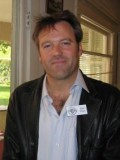
The result was widespread praise and an Oscar nomination for Pfister for Best Cinematography.Pfister went right back to work on Nolan's next project, "The Prestige" (2006), a supernatural thriller about two Victorian-era magicians (Christian Bale and Hugh Jackman) engaged in a powerful rivalry involving a dangerously escalating tit-for-tat competition. Dispensing the gothic look of Tim Burton's original two films and the overindulgence of Joel Schumacher's splashy installments, Pfister and Nolan settled on a grittier look that was reminiscent of 1970s crime thrillers, which helped accentuate the dark undercurrent of the Batman character (Christian Bale). After shooting the well-regarded indie drama "Laurel Canyon" (2002) and the high-profile heist thriller "The Italian Job" (2003), he retuned to Nolan's side for the director's first blockbuster, "Batman Begins" (2005), a franchise reboot that became a huge critical and box office success, while boosting the careers of both director and cinematographer. Pfister's eye for noir-like detail lent visual luster to "Insomnia" (2002), which was gorgeously shot on location in Alaska. Pfister soon became Nolan's cinematographer of choice while also working on several other noteworthy indies like "Scotland, PA" (2002) and "Rustin" (2002). The pair soon teamed up for Nolan's breakout feature, the psychological thriller "Memento" (2000), which cemented both as talents on the rise. The film made its way to the Sundance Film Festival, where it caught the attention of young director Christopher Nolan. In 1998, Pfister turned down a higher paying job to shoot the indie drama "The Hi-Line" (1999) for director Ron Judkins. Pfister alternated serving as a director of photography on countless horror films and erotic thrillers while handling cameras for Kaminski and Papamichael on major films like "Phenomenon" (1996), "Mouse Hunt" (1997), "Austin Powers: International Man of Mystery" (1997) and "Instinct" (1999).

His work at AFI caught the eye of a recent graduate, Janusz Kaminski, who found him jobs as a camera operator under cinematographer Phedon Papamichael on several low-budget genre films for producer Roger Corman, starting with "The Unborn" (1991).

Having worked as Altman's second unit cameraman, Pfister enrolled at the American Film Institute, where he made his first inroads toward dramatic filmmaking. After building a résumé of documentary work, Pfister applied to the American Film Institute, only to be pried away by director Robert Altman, who was looking for a genuine news cameraman to both play the role and shoot actual B-roll footage for his political satire series, "Tanner '88" (HBO, 1988). In the early 1980s, he made his way to Washington D.C., where he shot footage of Congressional hearings and White House events for various news programs, including "Frontline" (PBS, 1983-). One project, a visual essay about a local Victorian house, impressed his bosses enough to earn him a promotion to cameraman. The job gave Pfister access to cameras, which he borrowed to shoot short films on weekends.

After graduating from high school, he worked as a production assistant at WMDT-TV in Maryland. Impressed by the equipment required to make a major motion picture, he soon began making his own movies with an 8mm camera. Pfister had his first taste of the film business when scenes for the Burt Reynolds detective drama "Shamus" (1973) were shot in his neighborhood. Born in Chicago, IL, Pfister was raised the grandson of a city editor for a major newspaper in Wisconsin, while his father was a television news producer who began his career at the local CBS affiliate and eventually moved on to cover major national stories for the likes of Peter Jennings and David Brinkley.


 0 kommentar(er)
0 kommentar(er)
